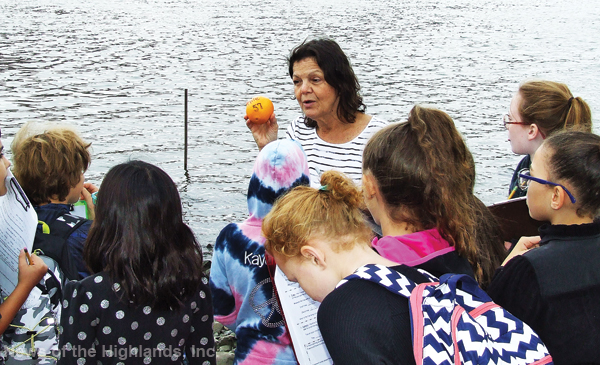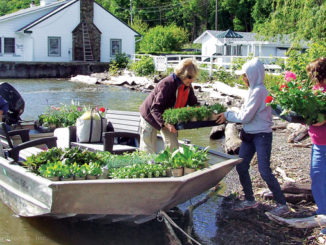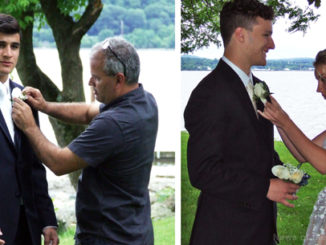
Each year, students gather up and down the Hudson River for a Day in the Life of the Hudson River, which was started by the Hudson River Estuary Program. Its goal is to allow students to use real science to learn about the river, collect data to analyze and make hypotheses about trends based on results from previous years.
On Oct. 20, students from Willow Avenue Elementary School spent the day at Donahue Memorial Park collecting data from the river. A half dozen stations were set up between the Cornwall Yacht Club and the Moodna Creek. The kids spent about 20 minutes at each station.
At one station, an orange was thrown into the river to determine which way the water was flowing. It seemed as if the piece of fruit was caught in an eddy, or whirlpool, as it would head south and then loop back around north.
Turbidity and chlorophyll were the subjects at the next station. Using a long tube, students determined how much detritus, or debris, was in the water.
At the bottom of the turbidity tube is a black and white marker called a Secchi Disc. Water was poured into the tube and allowed to exit from the bottom through a small rubber hose. One student served as the looker and the other the pincher. When the looker spotted the disc, the pinch cut off the flow of water. A measurement, in centimeters, was taken. The experiment was conducted three times and an average calculated in order to get an accurate reading.
The first group of the day recorded a turbidity of 25 centimeters while the second and third groups observed turbidities of 34 and 43 centimeters respectively.
The smaller the number, the harder it is to see through the water. Tide plays a part in the amount of debris in the water. When the tide goes out, everything settles and the water is clearer. The sun also plays a part. Earlier in the day, the sun was shining and plants were producing more chlorophyll. Chlorophyll production diminished once the third group collected its data as the sun was blocked by clouds.
The lack of chlorophyll production was further proven by filling and squirting out water through a syringe. When chlorophyll is present, a filter in the syringe turns a brownish-green. For the third group of students, it remained relatively white.
Other stations allowed students to measure the temperature of the water, as well as the pH and salinity (salt) levels. The salt levels measured higher than usual likely due to the lack of rain. There has not been a lot of freshwater pushing the water to the ocean.
Later in the day, a seine net was used to catch fish near the shore.



